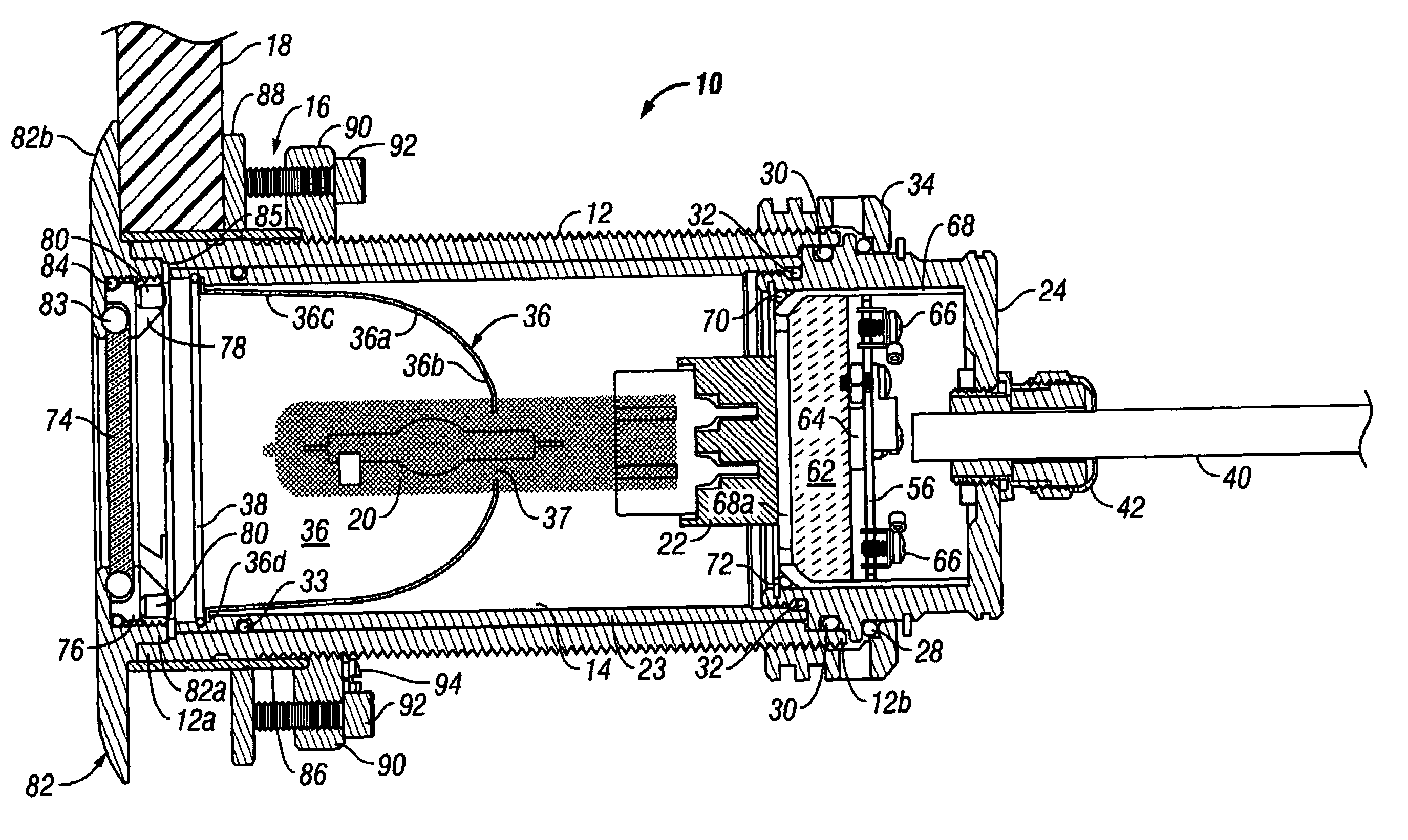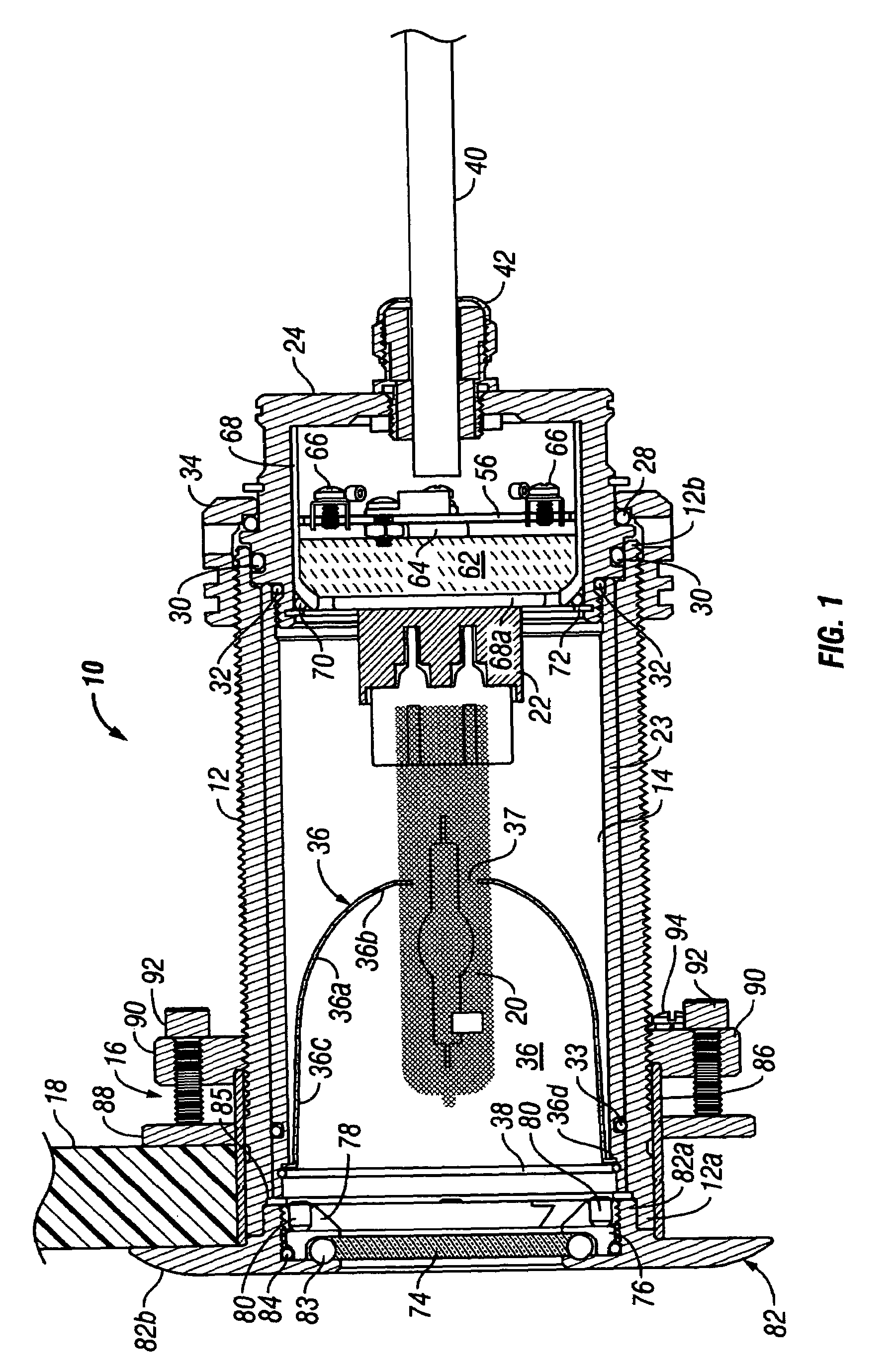Thru-hull light
a technology of thru-hull lights and tubes, which is applied in the direction of special-purpose vessels, vessel parts, and vessel construction, etc., can solve the problems of inability to permanently attach underwater lights to the exterior of the hull, tedious and cumbersome to lower lights on lines and cables from the deck of the vessel, and numerous problems encountered with prior art thru-hull lights
- Summary
- Abstract
- Description
- Claims
- Application Information
AI Technical Summary
Benefits of technology
Problems solved by technology
Method used
Image
Examples
Embodiment Construction
[0029]Referring to FIG. 1, a thru-hull light 10 includes an externally male threaded cylindrical lamp housing 12 made of a corrosion resistant material such as bronze, stainless steel or titanium and having a hollow interior 14 that communicates with a forward end 12a of the lamp housing 12. A thru-hull fitting assembly 16 is connected to the forward end 12a of the lamp housing 12 for mounting the forward end 12a of the lamp housing 12 in a hole in the hull 18 of a vessel in a water-tight fashion. Only a portion of the hull 18 is illustrated on one side of the sectional view of FIG. 1. The hull 18 could be made of fiberglass, steel, aluminum, wood, concrete or any other material used to construct rigid boat hulls. A high intensity discharge (HID) lamp 20 is plugged into a lamp socket 22 mounted in the interior 14 of the lamp housing 12. By way of example, the lamp 20 may be an OSRAM SYLVANIA® HID one hundred and fifty watt lamp with a color temperature of seven thousand K. The lamp ...
PUM
 Login to View More
Login to View More Abstract
Description
Claims
Application Information
 Login to View More
Login to View More - R&D
- Intellectual Property
- Life Sciences
- Materials
- Tech Scout
- Unparalleled Data Quality
- Higher Quality Content
- 60% Fewer Hallucinations
Browse by: Latest US Patents, China's latest patents, Technical Efficacy Thesaurus, Application Domain, Technology Topic, Popular Technical Reports.
© 2025 PatSnap. All rights reserved.Legal|Privacy policy|Modern Slavery Act Transparency Statement|Sitemap|About US| Contact US: help@patsnap.com



